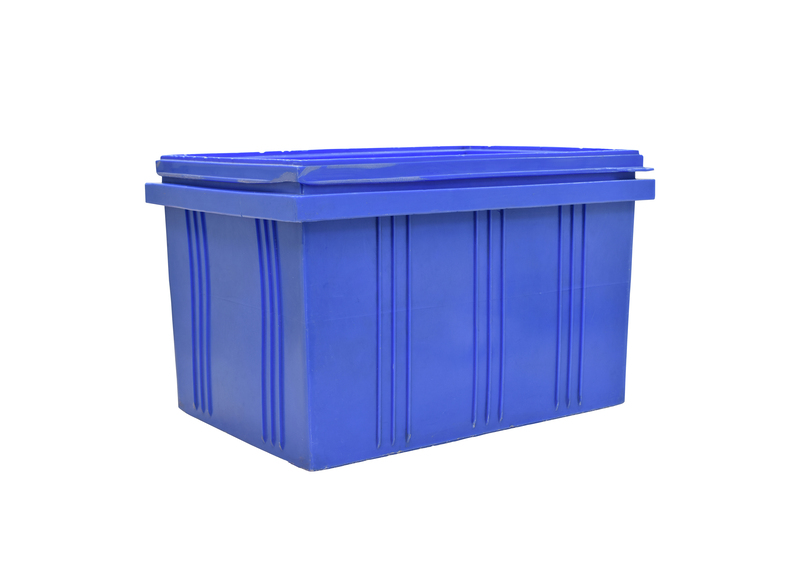Storing Your Freezer Correctly: A Step-by-Step Approach
Posted on 08/06/2025
Storing Your Freezer Correctly: A Step-by-Step Approach
Freezer organization is more than just packing food away. When you store your freezer correctly, you protect your investments, minimize waste, enhance safety, and make daily meal preparation simpler. This comprehensive guide explains the best practices for freezer storage, offers actionable steps, and answers common questions so you can optimize every inch of your freezer space.
Why Proper Freezer Storage Matters
Many households underestimate the importance of proper freezer storage. When you organize your freezer efficiently, you not only extend the shelf life of foods but also cut down on food waste and save money. Incorrect storage methods can lead to freezer burn, difficulty finding items, and even contamination. Let's break down why storing your freezer efficiently is a game changer:
- Prevents food spoilage and freezer burn
- Makes meal planning faster and easier
- Helps maintain consistent freezer temperature
- Reduces food waste and saves money
- Keeps food safe and prevents cross-contamination

Step 1: Prepare and Clean Your Freezer
Before you organize your freezer, it is vital to start with a clean slate. This process helps prevent contamination, odors, and clutter:
- Unplug the freezer or turn off the power.
- Remove all contents and place perishables in a temporary cooler with ice.
- Discard expired or freezer-burned items--if in doubt, throw it out.
- Use a solution of warm water and mild soap to wipe down interior surfaces thoroughly.
- Dry the freezer completely before plugging it back in.
This fresh start ensures that any new items you store won't pick up unwanted odors or bacteria.
Step 2: Categorize and Inventory Your Items
Creating an inventory is an often overlooked but vital part of freezer organization. A simple inventory saves time, reduces duplicate purchases, and helps you locate food quickly:
- Group similar foods together (meats, frozen meals, veggies, baked goods, etc.).
- Write down what you have on a sheet or use freezer inventory apps.
- Label packages with contents and freezing dates for optimal rotation.
Tips for Inventories
- Place a magnetic dry-erase board on the freezer door for easy updates.
- Check your list before shopping to avoid buying what you already have.
- Organize your list by freezer section for even faster access.
Step 3: Choose the Right Containers and Packaging
Quality packaging makes all the difference when you're storing your freezer correctly. Preventing freezer burn and contamination depends on using materials built for cold storage:
- Freezer-safe bags: Perfect for portioning meats, fruits, or veggies. Remove excess air before sealing.
- Plastic or glass containers: Opt for airtight, stackable options labeled "freezer-safe."
- Aluminum foil: Great for wrapping baked goods and casseroles. Use an additional layer for max protection.
- Vacuum sealers: For long-term storage, vacuum-sealed bags offer the best protection against air and moisture.
Tip: Always label every package with the contents and the date it was frozen to make food rotation simple and safe.
Step 4: Create Zones for Different Foods
When it comes to correct freezer storage, creating zones makes it easy to find what you need while keeping foods at their freshest. Here's how to zone your freezer:
- Top shelf: Store ready-to-eat items, leftovers, and frequently used ingredients here.
- Bottom shelf or drawers: These are ideal for raw meats and fish to avoid cross-contamination.
- Door compartments: Use for items with a higher tolerance to temperature fluctuations, such as butter, nuts, or opened packages of frozen fruit.
- Middle shelves: Place frozen fruits, vegetables, prepared meals, and baked goods here for easy access.
Pro tip: Use clear bins or baskets to compartmentalize categories and prevent spills or leaks from contaminating other foods.
Special Considerations for Chest Freezers vs. Upright Freezers
The way you organize may depend on the type of freezer you own:
- Upright freezers: Use shelves and bins for easy vertical access.
- Chest freezers: Stack items with the oldest on top, and use dividers or labeled baskets to avoid digging for food.
Step 5: Maximize Freezer Space
Optimal use of freezer real estate ensures you get the most out of every cubic inch. Try these proven strategies:
- Lay items flat in bags and freeze, then stack to conserve space.
- Use stackable containers for leftovers, soups, and casseroles.
- Store similar shapes together (for example, all rectangular items on one shelf).
- Avoid overloading; air must circulate freely for consistent freezing.
Rotate Foods Regularly
Implement a first-in, first-out approach:
- Put newly added foods behind older items.
- Keep older items toward the front or top for quicker use.
- Check expiration and use-by dates monthly to avoid spoilage.
Step 6: Maintaining the Correct Freezer Temperature
A crucial part of storing your freezer correctly is ensuring it runs at the ideal temperature. The U.S. Department of Agriculture recommends keeping your freezer at 0?F (-18?C) or lower.
- Use a refrigerator/freezer thermometer to monitor the temperature.
- Avoid frequent opening of the door to minimize temperature fluctuations.
- Don't overload or underload; a moderately filled freezer holds temperature best.
How to Handle Power Outages
- Keep the freezer closed as much as possible; a full, unopened freezer can keep foods frozen for 48 hours (24 if half full).
- Add ice or dry ice during long outages to preserve food.
- After an outage, check for partially thawed foods--if still icy and below 40?F (4?C), they are safe to refreeze.
Step 7: Labeling and Dating
Consistent labeling is essential for successfully organizing your freezer. Knowing what you have and when it was stored prevents forgotten foods and wasted money. Here's how to do it right:
- Use freezer-safe markers or labels.
- Include both the contents and the date on every package.
- For most foods, use within 2-3 months for best quality, although many last up to a year when stored properly.
Labeling Methods
- Pre-printed freezer labels--easy to apply, resistant to cold and moisture.
- Masking tape and a permanent marker--a budget-friendly DIY option.
Step 8: Cleaning and Defrosting Regularly
A clean freezer works more efficiently and keeps your food safer. Plan to deep clean and defrost old-style freezers at least twice a year (or when ice build-up exceeds 1/4 inch).
- Empty and unplug the unit before cleaning and defrosting.
- Wipe surfaces with warm, soapy water and dry thoroughly.
- Restock following your updated system and labels.
Step 9: Common Mistakes to Avoid in Freezer Organization
Even the most well-intentioned freezer owner can make mistakes. Avoid these pitfalls to maintain order and preserve your food's quality:
- Overcrowding--restricts airflow and leads to uneven freezing.
- Poor packaging--causes freezer burn and flavor loss.
- Neglecting to label and date packages.
- Repeatedly opening the door--raises the temperature and stresses the compressor.
- Storing hot foods--always cool foods before freezing to prevent raising the internal temperature.
Frequently Asked Questions About Freezer Storage
Q: What foods should not be frozen?
- High-water-content produce like lettuce and cucumbers turn mushy.
- Dairy products such as certain soft cheeses and cream sauces may separate.
- Fried foods lose their crispness after freezing.
Q: How can I prevent freezer burn?
- Use airtight, freezer-specific containers or vacuum-seal packaging.
- Label and use foods promptly.
- Remove as much air as possible from bags and containers.
Q: Why does my freezer smell?
- Improperly wrapped foods can cause odors. Clean regularly and use baking soda or charcoal to absorb smells.
- Check for expired or spilled items.
Q: How long can I keep food in the freezer?
- Meats: 4-12 months, depending on the cut.
- Fruits and vegetables: 8-12 months.
- Bread and baked goods: 3-6 months.
- Label and rotate for best quality.

Summary: Your Freezer Organization Checklist
- Inspect, empty, and clean the freezer regularly.
- Group foods by category and maintain a current inventory.
- Package and label items with the date for easy rotation.
- Designate freezer zones for meats, vegetables, and pre-cooked meals.
- Set and maintain the temperature at 0?F (-18?C).
- Defrost and deep clean at least biannually (or as needed for frost-free models).
- Follow first-in, first-out (FIFO) rules for minimal waste.
Conclusion: Embrace the Power of a Well-Organized Freezer
- Correct freezer storage saves money, reduces waste, and boosts your kitchen's efficiency. With a thoughtful system, labeled containers, and smart zoning, your freezer will become a trusted ally, not an icy black hole of forgotten food.
- Implement these step-by-step strategies for storing your freezer correctly, and enjoy longer-lasting food, easier meal planning, and ultimate peace of mind every time you open the freezer door!
Take charge of your freezer today - start with a clean-out, establish your zones, package properly, and label everything. A well-organized freezer is just a few steps away!





